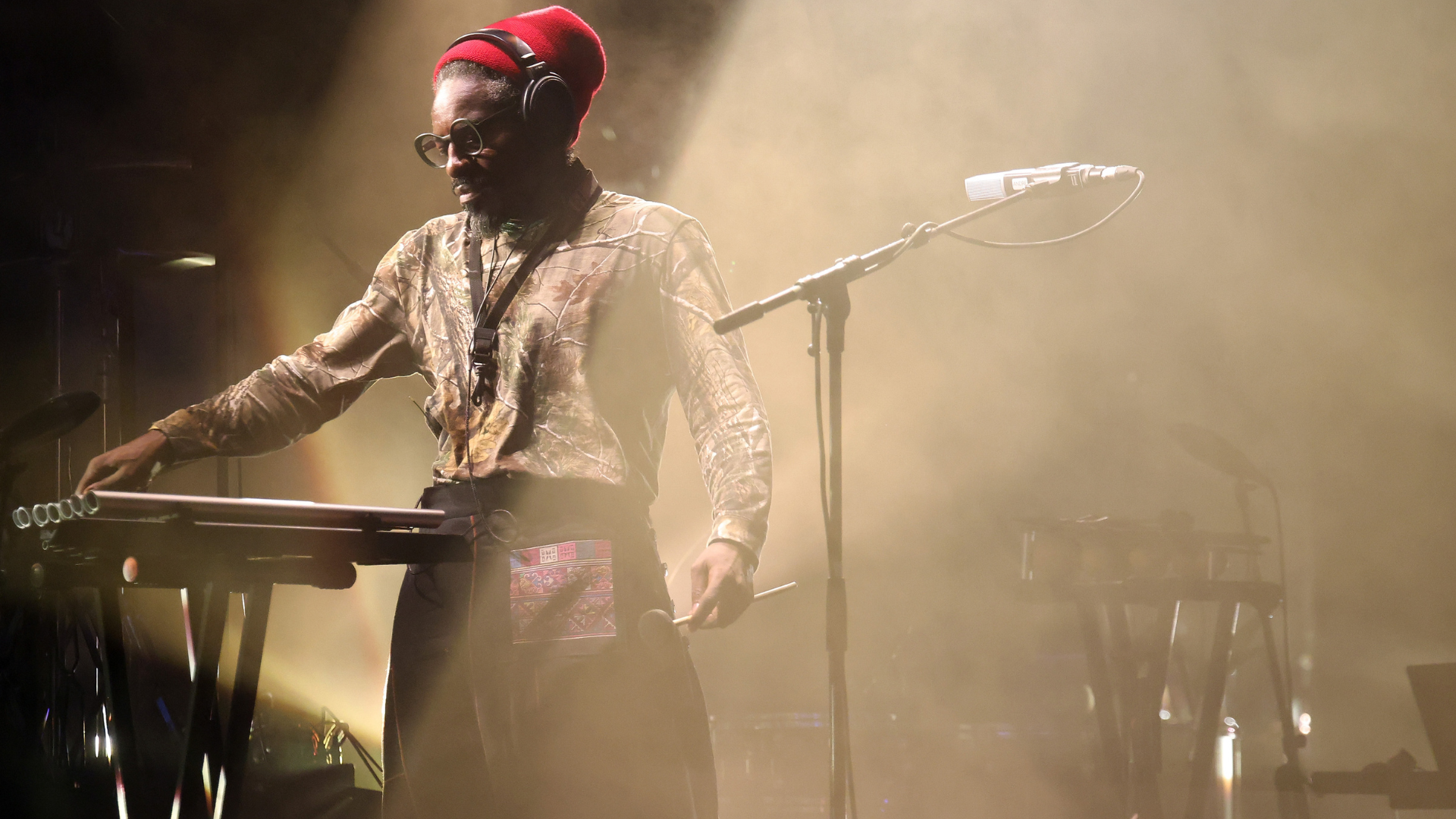
It’s endearing to witness someone’s style evolve as they age. It’s why many fashion lovers believe the youth-obsessed, youth-dependent fashion world should platform mature talent more often. Because as you age, your taste is increasingly defined. You wear clothes differently, with credibility, given you’ve had them forever, and every imperfection bespeaks your body’s contours. Your dress, one hopes, not only gains sophistication but stays ever-traceable to its roots.
Of all that makes André 3000 special, that’s what I’ve found particularly remarkable lately since not all rappers carry the aesthetic that was once their signature well into adulthood. Where Busta Rhymes was once the unflinchingly offbeat dresser misunderstood by many, he now favors the conventional codes of hip-hop showiness. Some other artists of his era, too, have become faltering logomaniacs. And Snoop Dogg, whose Rastafarian-inspired locs mark the most, if only notable shift in his appearance, can hardly be seen in more than a bomber jacket, a matching set, requisite jewelry, and the occasional bucket hat.
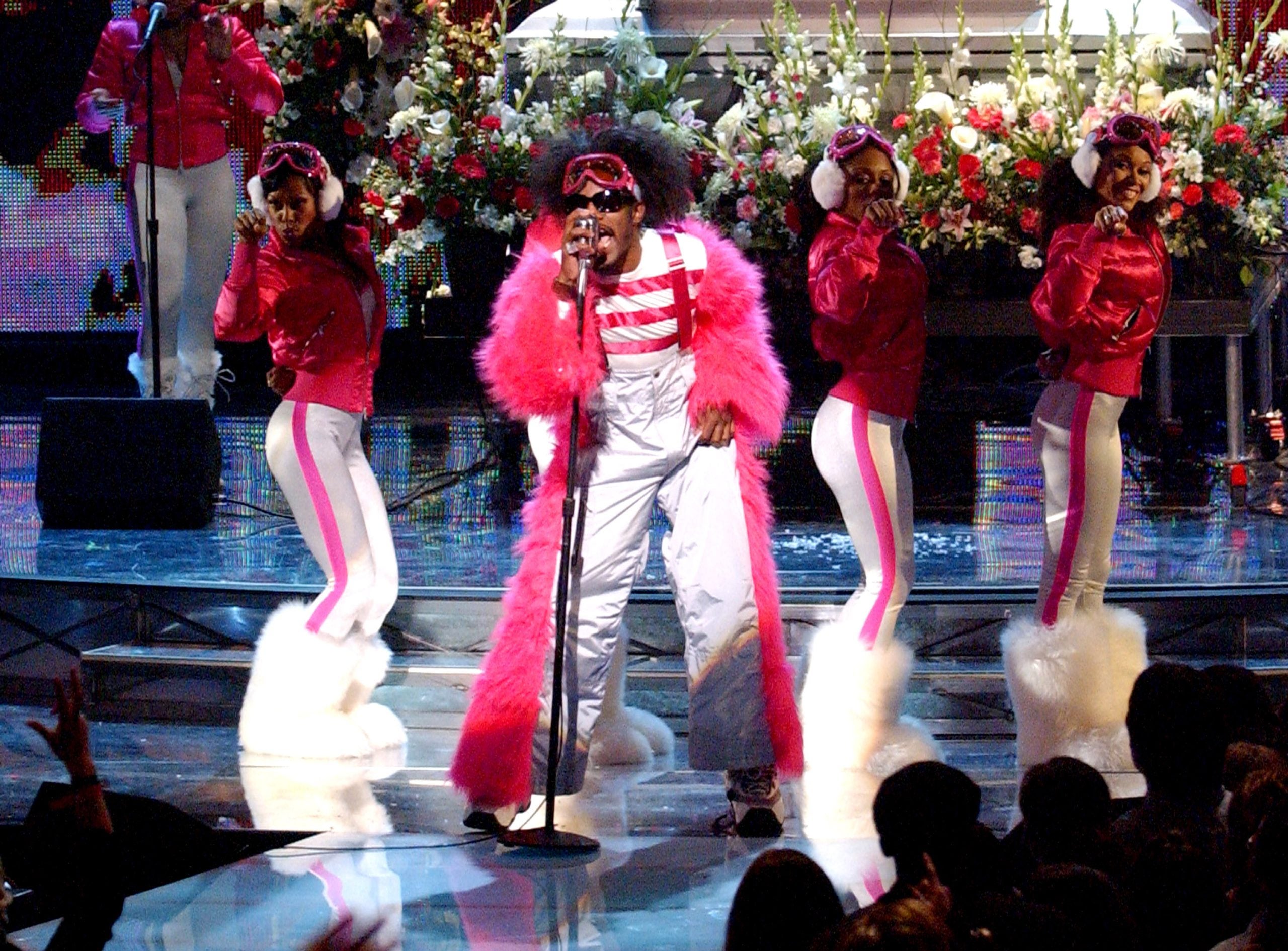
Right now it appears that there is a fashionable decline of the generals. But even a veteran fashion reporter immersed in the world of clothes has confessed to me that hers are much, much less a priority now than when she was working in the industry. Fashion as you age can indeed become the least important component of life. Not so for André! He remains a trailblazer in matters of the cloth, which throughout his career has covered his flawlessly pressed and permed hair in the form of a church lady-inspired headwrap, dandified his many silhouettes through suiting, been seer suckered for overalls worn with diva-like sunglasses and a ribbed beanie.
His GQ Men of The Year photoshoot in that outfit is what many of us associate with what we’ve referred to as the artist’s “flute era.” His 2023 debut solo and now Grammy-nominated instrumental album New Blue Sun would make apparent his artistic expansion as a flutist, symbolizing his prevailing stylistic prowess despite puzzlements over his sonic shift. But that is the stuff that has made André 3000 the nonpareil figure we’ve come to adore.
Patrick Johnson, a scholar and Sonoma State professor of American multicultural studies, sees the rapper’s style choices as metaphors that help narrate a bigger composition. “It’s the glasses; it’s the little notes he’s hitting in his fashion that says, ‘Okay, I’m thinking about these things differently, I’m flipping it,’” Johnson shared. But the reason he’s so relatable, so fly to us, is put plainly by Johnson. “André never feels outside of what other brothers are doing.” He isn’t entirely separate from or, say, weirdly above his peers who were “wearing jerseys and pink, furry Kangos. He was very much in relationship with what other Black men were doing,” Johnson continued.
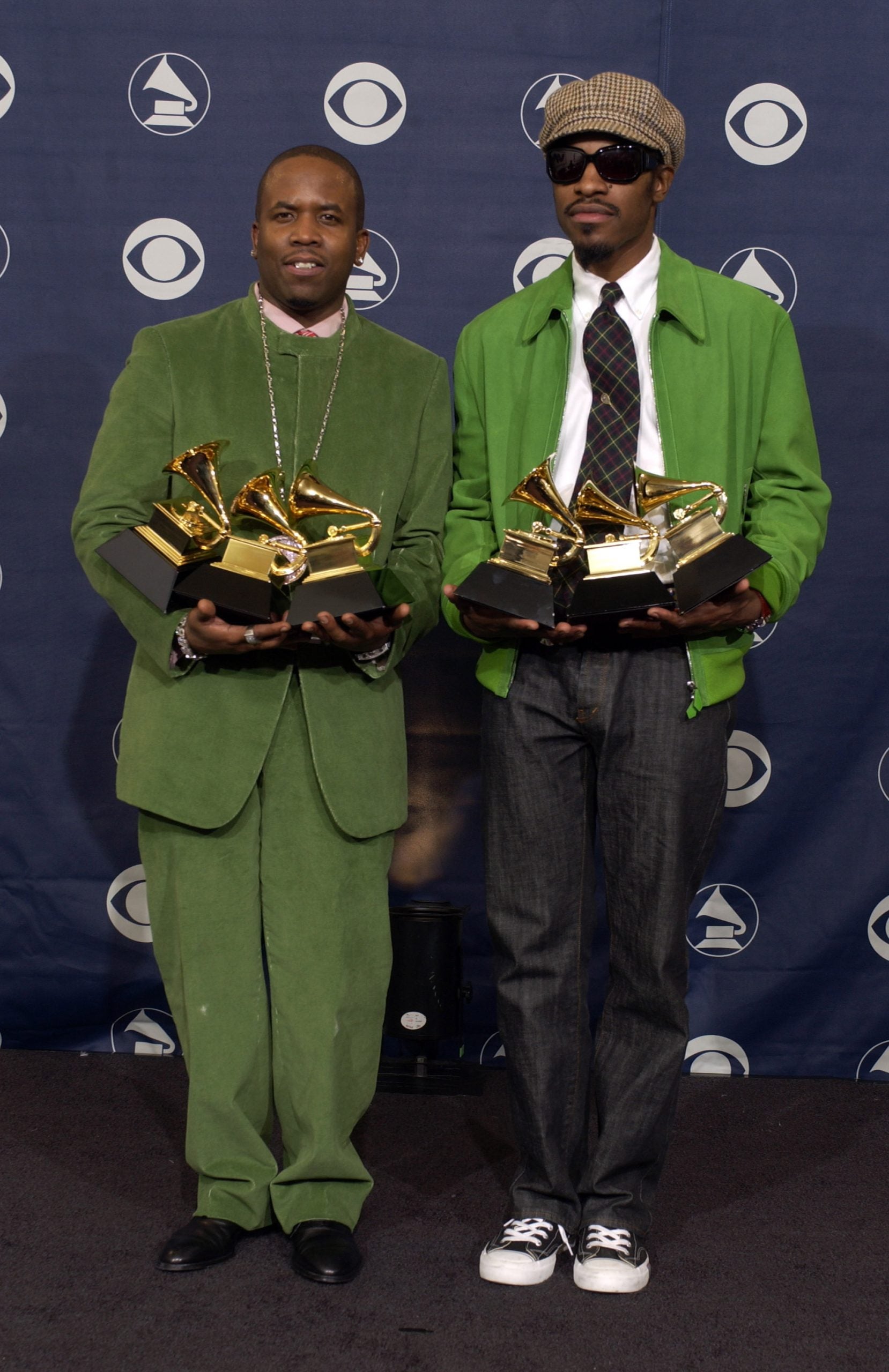
André 3000 has influenced rap eccentrics his junior whose idiosyncratic sensibility is seen in their sound and clothes: California’s Tyler, the Creator, Cavalier from Brooklyn, and EarthGang, the Atlanta group for which Spelman’s curator in residence Karen Lowe brings OutKast to mind. Knowing André is knowing he comprised half of the classic rap duo OutKast, and the mention of their infamous video, “Hey Ya!,” will summon the image of him clad in a St. Patty’s green button-up, wide, white suspenders affixed to tartan trousers, and a green and black peppermint ascot, vigorously singing and bobbing his head with a shoulder-length bob.
Those are the accouterments of an outstandingly dressed Black man, a dandy, to be sure, but that gives way to André centering himself in the video–self-replicating and standing in as seemingly minor characters. And in effect displaying his creative range. He’s a Black man who isn’t afraid to play with ideas, a quality Johnson describes as instructive. “Think about the Benjamin Bixby stuff. At some point, “André embraced prep and Americana through a distinctly Southern perspective,” he explains. Here Johnson also mentions Benjamin Bixby, the now-defunct clothing line by the artist that centered around Black dandyism.
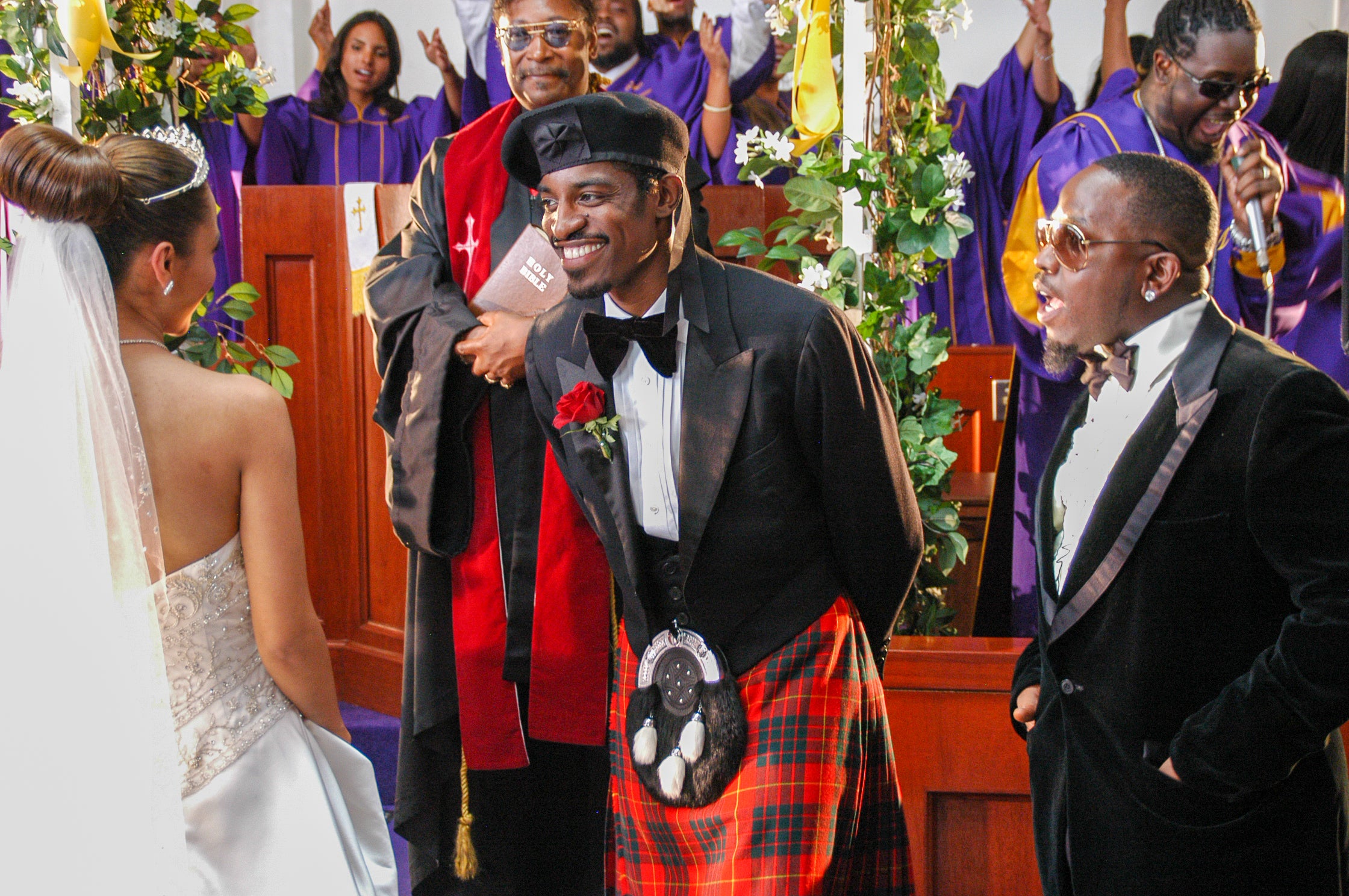
Lowe agrees. Three years ago, she spearheaded an open-air digital exhibition titled “The South Got Something to Say,” taken from the rapper’s 1995 Source Awards speech, where he called out the ceremony and its dismissal of the South’s contributions to the genre when we were shaping it in real-time. But the region, however influential and formative, hasn’t always been so free for Black men with expressive style. The curator mentions that the same can be said about Black culture at large. André 3000’s narrative is emancipatory; he represents a rare liberty. As a Black Southern man, he personifies a freedom that permits individuality without always being misunderstood.
Lowe, who, like André 3000, is an Atlanta native, speaks to his free nature in “how he moves” and “not being defined by stereotypes and expectations.” To her, he appears to be mentally free. At times, he outright defies culturally imposed notions, like when he wears ultra-preppy clothing, he one-ups their assumed originators.
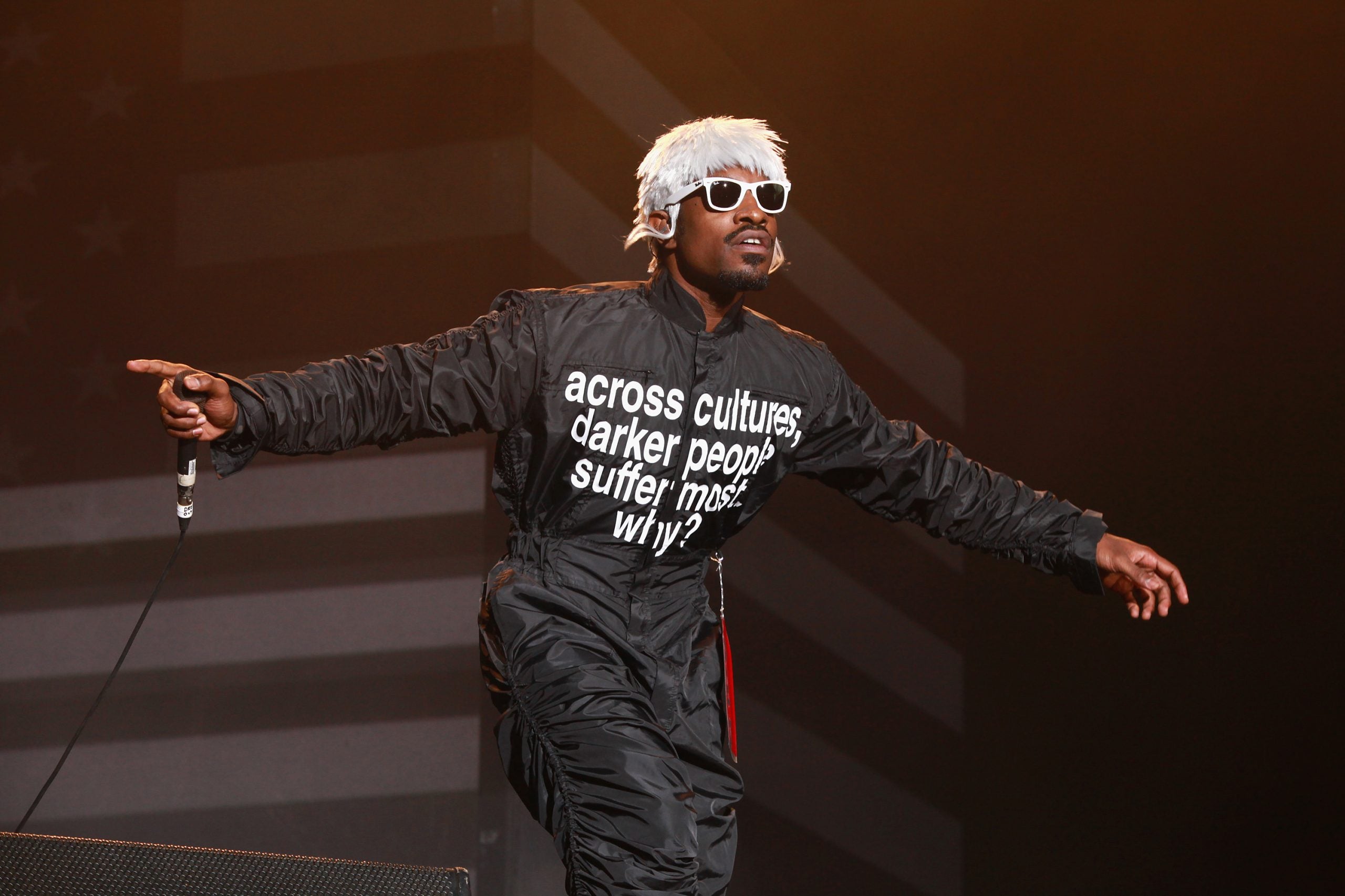
Other times, he plays into them as one of hip hop’s significant titans nonetheless. But he isn’t bound to either: in music or fashion. His references can be so rich they go over your head, such as his wearing a white wig in Outkast’s “Prototype” video, referencing P-Funk, a doo-wop band out of New Jersey. (A white wig he wore during one of his international concerts in 2014 is on view at the National Museum of African American History and Culture’s Musical Crossroads Gallery.)
Lessons aplenty can be learned from the explorer, the inventor, the experimenter, and the man that is André 3000—among them that a childlike enthusiasm for clothing can prevent one’s style from going stale, that our wardrobes can effectively be toy boxes. His strange swagger shows how the hodgepodge of influences that often make a terrific outfit should be honest. And that the most genuinely iconic dressers in American history stayed curious. Who else has done that while keeping as suave as the best-dressed men in our families?
